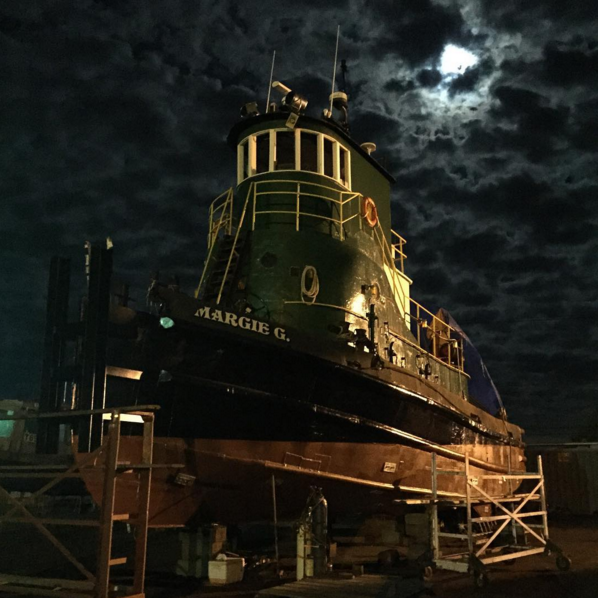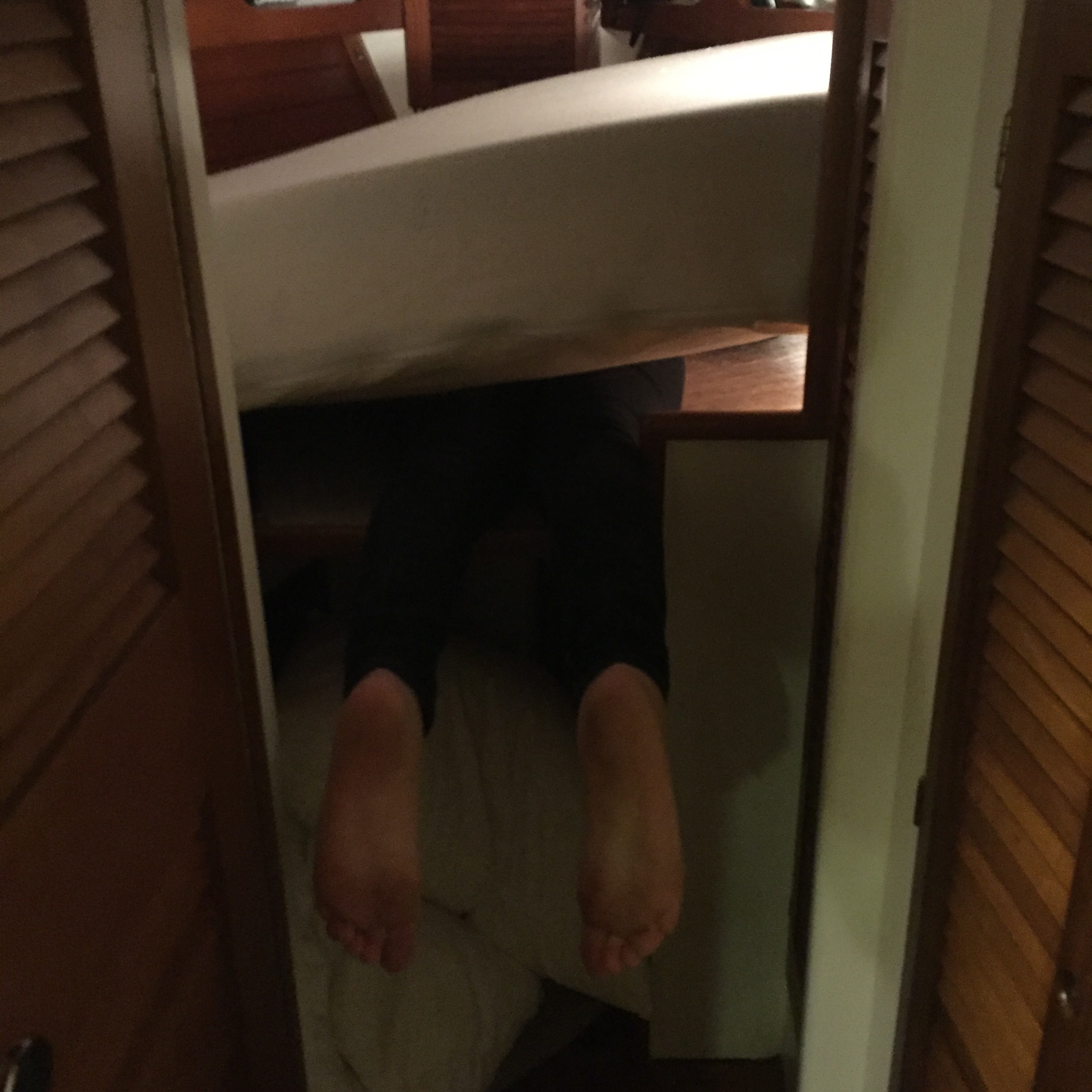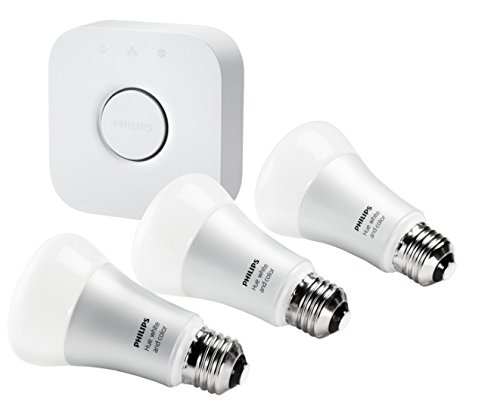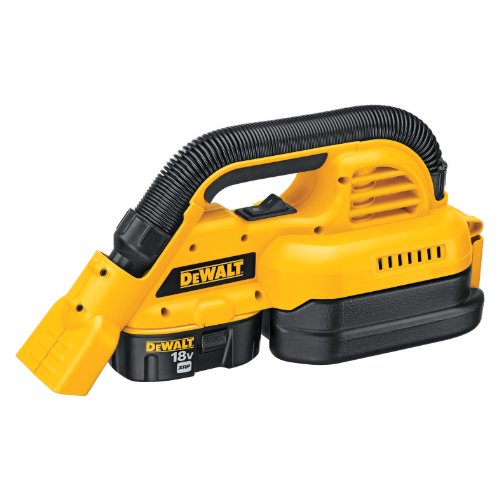It’s been almost exactly two months since we set sail away from New York and some days it feels like we left two years ago. We have quickly found a routine for working and play, just as we did on land. And we’ve slowly eked a path up the east coast to Maine, bay by beautiful bay.
A few nights ago, as I sat in the cockpit of the Scallywag, waiting for meteors to streak the sky, I felt deeply appreciative of the luck and persistence, as well the ability to work from anywhere, that got us here, under a carpet of stars in Boothbay Harbor, with our dog obsessively licking my arm. (Way to kill the romance, Honey.)
Sometimes when I wake up I can’t imagine what our old life feels like anymore. This new one has surprises and challenges for us every day, both personally and professionally. As I’ve calibrated to life as a full-time cruiser, I’ve also had to make some significant adjustments to how I work.
I thought I’d share what works for me and how I manage my business so that it might help anyone else out there that’s wondering if they can hack it professionally while sailing.
A remote working preamble
I’m not new to remote working. In fact, I'm somewhat of an expert in it. Part of what I do for a living is help advise other companies on how to structure and manage remote teams. In years combined, I’ve traveled while working in some form for the majority of my career — from my apartment in LA and from tea houses in Iraq. On my best days, I’m an easygoing and flexible person, which makes working in a different place every day fun, if not always easy.
But working while traveling isn’t for everyone. As a manager, I’ve run remote teams throughout my career, including growing a remote editorial team of 4 to more than 50 people, and saw all kinds of ways that working by yourself from weird locations can wig people out. I also became an expert what kind of behaviors created great remote professional relationships and what didn’t. I'm also pulling together a list of further reading that I'll post separately.
Get into a groove before you go
While this work style isn’t different for me, I am a new small business owner. Three months before we set sail, I opened my own company, which was the culmination of content strategy work I’d been doing for years. So while we were prepping the boat for launch, I was also locking down contracts, incorporating the business, setting up its digital infrastructure, contracting freelancers and delivering actual work regularly.
To put it lightly, I don’t recommend that timeline. For those three months, I worked 14-hour days and then went home to boat work. Sometimes I worked in the middle of the boat work, asking Jon to stop sanding something so I could jump on a conference call.
When we had to go on the hard for a couple of weeks and our boat was on blocks in a signal dead zone, I had to commute to a coffee shop by climbing down a ladder with my laptop and walking 20 minutes just to check email. I thought I was going to die. Don’t be like me. Give yourself more time to get your boat and business ducks in a row before you leave.
Change one thing at a time
There’s an old piece of advice that says you should never move, get a new job and get married at the same time. Funny enough, Jon and I did just that when we moved to New York, and we survived. But the principle remains true. While those last three months before taking off were murder, our overall timeline for cruising was unintentionally a much longer one. We bought our boat three years ago, without knowing how to sail it. In that time we’ve almost always lived on it half the week, and spent plenty of time learning how to operate and care for it.
Lifestyle-wise, splitting our time between boat and land was a luxury of our apartment’s amazing rent control, but the idea of easing into things is one that I think can be applied universally. Eleven months ago, we moved onto the boat full-time, worked out the kinks of full-time life aboard when the boat was forcibly docked until spring, and had a chance to play around with alternative sources of power and internet while having access to electricity and wifi close by.
Even the dog had a chance to settle in and figure things out.
By the time we shoved off, the only things we really had to nail down were our pace and our routine, as well as what life was like primarily at anchor or mooring ball.
Consolidate your schedule and your days
Even before leaving and as soon as you do, start thinking about setting blocks of time for work and calls. It helps to hold days adjacent to the weekend in particular, so that you can have time to catch up between sailing days. Set your calendar availability accordingly, so that you know you’ll be truly “off” when you’re out sailing, and that you won’t have to put out any last-minute fires. It can help to put an away message up for particularly long sails or for weekends when you’ll be more likely to be off the grid. Don't feel guilty about not always being immediately available. I’ve found that as both manager and managed, being clear about your availability and doing your work accordingly is way more important than the number of hours you’re perceived as being available.
Plan your work around your internet connection
This goes for daily work, and the type of work you do. When I started my business, I moved the focus of my work away from daily people management even though I loved it, because I knew I wouldn’t be able to be as hands-on with employees as I am when in one place. The people I do hire as contractors are mostly people I’ve worked with before and have a proven track record of reliability and autonomy. I pay them more so that I can set them free and not worry. That’s a really valuable investment in itself.
Professionally, I pick clients and contracts that have predictable timelines for turnaround (so no more breaking news work), and while I prefer to do video chats instead of conference calls, I’ve found that video is almost impossible to support without advanced planning. So choose your communication methods wisely.
Blocking chunks of time for work and sailing will allow you to get to a strong internet connection for things like file transfers and heavier usage tasks, like video calls or video editing. I like to plan these things for the morning, so that I have a chance to work a little more loosely in the afternoon, but also most coffee shops are open early and can close as early as 3 pm. That coincides nicely with my energy low periods, so if I work 7:30-3, basically all my work is done and I can get a change of pace when I can't stare at a screen any longer.
This sometimes means you have to choose to drop anchor in more populated locales than you'd like, so you can be sure to get a signal. Hardcore cruisers might scoff at this, and it's true, I've mourned the deserted islands we haven't been able to hang out on for days on end. But to us, being able to cruise and dropping anchor in a slightly busier port to get work done is way better than staying home. So we save off the grid cruising for weekends.
Learn the coffee shop circuit
The digital nomad’s coffee shop usually isn’t the trendiest one on the block. You’ll need open tables, open wifi, and open wall sockets, so that you’re not constantly draining your boat battery. Picking one a bit farther from the main drag and ordering a large order early in the day with a generous tip will ensure that you’ll be able to sit for hours undisturbed. If you're on calls, avoid cafes that specialize in smoothies and other blended drinks. Seriously. Starbucks, with its Google internet and Frappuccinos, is a blessing and a curse.
When arriving at a new place, I always check the internet connection on my phone while waiting in line, so that I don’t end up ordering a full breakfast for goodwill credit and end up without a connection.
Perfect your mobile office
Invest in your gear. It is the difference between work-life happiness or not. I’ll get into this in a later post, but my must-haves are a super fast, souped up computer, noise-cancelling headphones as well as headphones that cancel background noise for calls (Apple’s seem to be the best at this), an a/c and d/c charger for my laptop, a waterproof phone case with an extra battery built in so that I get twice the normal battery life, and extra internet via iPhone tether and separate hotspot. When coffee shop wifi clunks out during a conference call, I’ve swapped onto a backup method seamlessly enough that no one even notices.
Transportation is important too. We have foldable bikes that pack up so small I can ride to a coffee shop and tuck my bike under the table while I work so I don't ever worry about it getting stolen. Being able to carry my "car", and my "office" with basically no hassle in and out of a cafe makes me feel like a real badass.
Have backup internet
Aboard Scallywag, both our phones have enabled tethered hotspots, we have a Verizon hotspot, a wifi booster to make any open signal stronger and a cell booster to get better reception. We cycle through all of these on a daily basis. Internet needs are different for everyone, but I highly recommend this kind of system if you have to make sure you're always connected. Even then, you have to pick your ports carefully, the more off the grid you go.
Our friend Kim takes care of business at the wheel while I practice awkward hand gestures.
Be wildly reliable
This goes without saying but I’m saying it. Working remotely does not give you license to be less professional. Once, I had a newly hired employee that decided her first three weeks of work at a remote company should also be when she took a three-week road trip across the U.S. Her job lasted two weeks before I fired her. This is also why, when managing teams, I put a ban on moving cities during the first two months of employment for my employees at the distributed company I managed them at. If anything, you have to work twice as hard and communicate twice as well to achieve the same result while working remotely.
Luckily, If people trust you, you’ll be surprised at how overwhelmingly supportive they will be of your unusual lifestyle. But you have to build that trust. If you do it well, your cruising life will become its own marketing tool. Every professional call I have starts with the person on the other end asking where I am and how I work on a boat. I’ve gotten business referrals from people in back in New York talking about us pulling this off. If you do it well, this lifestyle will do you well.
Apply your hourly rate to your own time
I’ve met a lot of cruisers who go out of their way to save money by investing huge amounts of their own time or inconvenience. But there’s a break even point where, when focused on your work instead of your schemes, you’ll make more money by picking the more expensive or easier path. If it’s a choice between a mooring with a strong internet signal or a free anchorage way across the bay with none, it makes more sense for us to pick the more expensive option because we have more time and ability to work effectively, and our hourly rates are higher than the cost of a daily mooring ball. This applies too, though less often, with boat work. We fix almost everything ourselves, but we will invest in someone to teach us something new or do a menial task for us if it will take us an insane amount of hours to do it ourselves. It is more cost effective for us to spend that time working our real jobs to pay for someone else's help and have money left over.
Have “a guy”
Following that principle, sometimes, when you’re in the middle of nowhere, you just need someone to handle stuff for you. I employ regular contractors, for the most part, so there aren't many moments where I don't have the time to handle my own work, but I do have go-to contractors I know can turn things around in short notice, and one amazing guy who can do preliminary brainstorms for my business or research how to handle mail delivery on a boat, without qualm. I have an apartment manager who handles any issues in our apartment back in LA and friends I pay to jump in, in a jiffy, if I don’t have the time for a quick-turnaround data analysis. Figure out which things in your life are most vulnerable to last-minute needs and know who your people are to turn to before you go, both professionally and at home. This'll save you from ruining your day or your plans and make sure that your clients and your crew stays happy with you.
While we're at it, get used to the fact that you will need help professionally and personally but as mentioned above, if their hourly rate is lower than yours, it makes sense for your sanity and pocketbook to ask for help every once in a while, even if the help you need is more personal errand than professional.
Set expectations with your crew
There’s nothing more stressful than trying to finish work on a trip while everyone’s waiting for you to go do the fun stuff, right? That’s what cruising while working is like all the time, if your crew doesn’t understand how you need to work to be effective.
Share your schedules, have open and frank conversations when things are working or they’re not — for example, I get super anxious if Jon wants to sail to a new destination before a block of conference calls later in the day, because I like to make sure I have a strong cell connection and a quiet place to talk. After a few close calls, I asked that we always have several hours between our estimated time of arrival and those calls, so that I’m never trying to do work on the run.
Jon and I are often asked if we drive each other crazy, since we work and live all in the same small space. The answer is, thankfully, no, but that’s because over time we’ve developed tactics like this for being able to be alone, together, especially while working.
Like on the high seas, respect your crews’ requests or concerns when they voice them.
Find time for reflection
Let it be said that cruising and working is not a working vacation. It’s exhausting, especially in the beginning as you’re figuring everything out. It’s easy to pack every single day with something to do — emailing, fixing things on the boat, sightseeing — and in our case, several weeks can go by without us taking the time to pause and consider what it is we’re doing with our lives and appreciate it.
Reflection can come in a variety of ways — a blog, a logbook, a conversation of highs and lows over dinner, but make space to keep a record of your journey and your thoughts, and don’t let that fall to the least important thing on your list. Years from now, you’ll thank yourself for it.
Do you have a strategy or tip for how you handle working remotely, or have a question? I'd love to hear more.








































